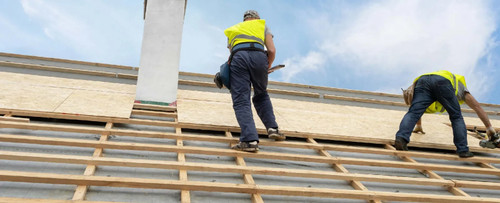A Construction Worker's Guide to Comfort on the Site
Posted by Jack Miller on 25th Feb 2024
Construction workers are the backbone of our built environment, tirelessly working on sites to bring projects to life. However, alongside the physical demands of the job, they often face a silent adversary: chafing rash. Long hours, strenuous movements, and exposure to various elements can exacerbate this discomfort, impacting both productivity and well-being. In this blog post, we'll explore the challenges construction workers face with chafing rash and provide practical tips to alleviate and prevent this common issue on the job site.
Understanding Chafing Rash in Construction
Chafing rash, also known as friction dermatitis, occurs when constant friction between clothing, equipment, and skin leads to irritation and inflammation. For construction workers, the combination of repetitive movements, abrasive materials, and sweat-inducing conditions creates the perfect storm for chafing rash to develop, particularly in areas such as the inner thighs, groin, underarms, and waistline.
Common Causes of Chafing Rash on Construction Sites
Heavy Work Clothing
Construction workers often wear heavy-duty clothing and protective gear to safeguard against hazards. While necessary for safety, these garments can trap heat and moisture, increasing the risk of chafing rash, especially in areas where fabrics rub against the skin.
Tool Belts and Harnesses
Tool belts, harnesses, and other equipment worn by construction workers can create friction points, leading to chafed skin over time. Improperly fitted or poorly designed gear exacerbates this issue, causing discomfort and hindering mobility.
High Temperatures and Humidity
Construction sites are often exposed to sweltering temperatures and high humidity levels, contributing to excessive sweating and moisture buildup. Prolonged exposure to these conditions softens the skin, making it more susceptible to chafing and irritation.
Long Hours and Intense Physical Activity
The nature of construction work demands long hours of physical labor, involving repetitive motions and heavy lifting. Continuous friction and pressure on the skin aggravate chafing rash, making it a persistent concern for workers throughout their shifts.
Practical Solutions for Chafing Rash Prevention
Moisture-Wicking Clothing
Opt for moisture-wicking fabrics that draw sweat away from the skin, keeping it dry and reducing friction. Lightweight and breathable materials promote airflow, mitigating the risk of chafing rash even in hot and humid conditions.
Proper Gear Fit and Adjustment
Ensure that protective gear, tool belts, and harnesses are properly fitted to minimize friction points. Regularly adjust straps and fastenings to maintain a comfortable and secure fit throughout the workday.
Anti-Chafing Products
Incorporate anti-chafing creams, powders, or balms into your daily routine to create a protective barrier against chafing rash. Apply these products to vulnerable areas before and during work shifts, focusing on areas prone to friction.
Thigh Guards and Compression Shorts
Consider wearing thigh bands or compression shorts under your work attire to provide additional protection and support. These garments reduce skin-to-skin contact and offer targeted relief for chafing-prone areas like the inner thighs and groin.
Hydration and Skincare
Stay hydrated throughout the day to maintain skin elasticity and reduce the risk of chafing rash. Incorporate skincare practices such as regular cleansing and moisturizing to keep the skin healthy and resilient against environmental stressors.
Chafing rash may be a common challenge for construction workers, but with proactive measures and proper care, it can be effectively managed and prevented on the job site. By prioritizing comfort, safety, and skin health, workers can focus on their tasks with confidence and resilience, ensuring a productive and fulfilling work experience amidst the rigors of construction. Remember, a little prevention goes a long way in conquering chafing rash and maintaining peak performance on the site.

